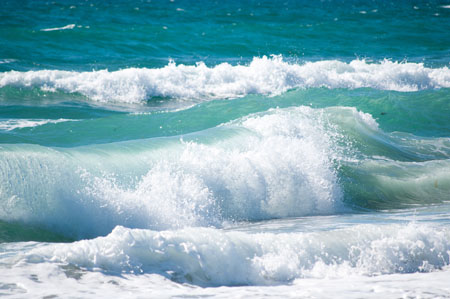Photographers often work near water, and sometimes from boats. They walk on beaches and structures built close to the sea, travel in small boats, and use inland waterways such as rivers, streams and canals, lochs and lakes, reservoirs, amenity sites and ponds, flooded gravel pits and other ex-industrial locations. They also take photographs in and around swimming pools. Obvious and not-so-obvious dangers are present within each of these locations, and safety can be enhanced by being aware of them at the outset. The advice that follows cannot be comprehensive and must therefore be regarded as incomplete. Those embarking on potentially hazardous activities on or near water should seek and observe appropriate professional and local safety advice.
The Royal Society for the Prevention of Accidents has identified the following four key elements of safety on water.
- Spot the dangers - water may look safe, but is can be very dangerous. Learn to spot and respect dangers such as those presented by deep, fast-flowing or cold water.
- Take safety advice - special flags and notices may warn of danger. Know what the signs mean and do what they advise.
- Don't go alone - go with another person who may be able to point out dangers or help if somebody gets into trouble.
- Learn how to help - it is easier to help yourself and others if you know what to do in an emergency.
Life-jackets are a key element of safety on water. The ability to swim is almost irrelevant under some circumstances, so wear a life-jacket when working in a small boat or in any situation where there is a realistic possibility of falling into deep, cold or fast-flowing water.
When working from a small boat it is always worth telling someone where you intend to go and when you expect to return. Seek and observe local advice, carry appropriate emergency equipment and a mobile phone, and wherever possible go with another person.






